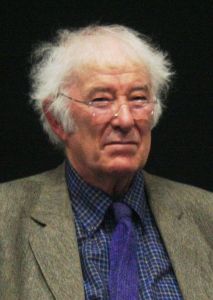 The places in which writers lived and worked become inextricably linked with their art within the public consciousness. Would the works of Wordsworth have captured the imaginations of such a large audience, and be held as treasures of the nation’s culture, if it was not for his poetic rendering of the Lake District? Does it matter that Shakespeare’s true home was outside of the London society he was observing and satirising? How would Dickens’s work be different if he had chosen a rural life rather than his metropolitan existence? These are perhaps unanswerable questions, but the notion that place has an artistic power is a persistent one. Continue reading
The places in which writers lived and worked become inextricably linked with their art within the public consciousness. Would the works of Wordsworth have captured the imaginations of such a large audience, and be held as treasures of the nation’s culture, if it was not for his poetic rendering of the Lake District? Does it matter that Shakespeare’s true home was outside of the London society he was observing and satirising? How would Dickens’s work be different if he had chosen a rural life rather than his metropolitan existence? These are perhaps unanswerable questions, but the notion that place has an artistic power is a persistent one. Continue reading
Literary Houses
The English Literary Heritage Survey: Some Early Thoughts
![Bronte Parsonage Museum, Haworth bronte-parsonage-museum[1]](https://englitheritage.files.wordpress.com/2015/02/bronte-parsonage-museum1.jpg?w=300&h=225) The English Literary Heritage project has been conducting a survey for the past few months, and it is beginning to yield some interesting insight. What visitors to museums, archives and literary houses are telling us partly builds upon expectations but also reveals different priorities for both individuals and groups.
The English Literary Heritage project has been conducting a survey for the past few months, and it is beginning to yield some interesting insight. What visitors to museums, archives and literary houses are telling us partly builds upon expectations but also reveals different priorities for both individuals and groups.
The emerging reasons for people to visit literary exhibitions and houses are not too surprising. The majority of people want to see more of a subject they already know something about, rather than learn something new. This is to be expected, as much of the draw of seeing manuscripts and other literary objects more often than not relies on an established relationship with a specific author’s work. More surprising, are the things that people value within the museum context. Continue reading
The Challenges of Exhibiting Manuscripts
 Literary manuscripts often lend themselves more to quiet and considered study than being displayed in a public space. Reading, for most people, is a solitary and thoughtful activity, usually undertaken in a comfortable chair, not standing in a public exhibition space jostling with other visitors. Manuscripts, unlike paintings or historical objects, are not just physical artefacts, they contain a plenitude of words and meanings that can be an overwhelming prospect for the museum visitor. As Jeff Cowton, curator at the Wordsworth Trust, writes, ‘To the initiated, a row of a favourite author’s manuscripts is something to dream of; to the uninitiated, such a display may fail to inspire even a wish to learn more’. To make those uninitiated connect with manuscripts and leave enlightened is the chief challenge of the literary exhibition. Continue reading
Literary manuscripts often lend themselves more to quiet and considered study than being displayed in a public space. Reading, for most people, is a solitary and thoughtful activity, usually undertaken in a comfortable chair, not standing in a public exhibition space jostling with other visitors. Manuscripts, unlike paintings or historical objects, are not just physical artefacts, they contain a plenitude of words and meanings that can be an overwhelming prospect for the museum visitor. As Jeff Cowton, curator at the Wordsworth Trust, writes, ‘To the initiated, a row of a favourite author’s manuscripts is something to dream of; to the uninitiated, such a display may fail to inspire even a wish to learn more’. To make those uninitiated connect with manuscripts and leave enlightened is the chief challenge of the literary exhibition. Continue reading